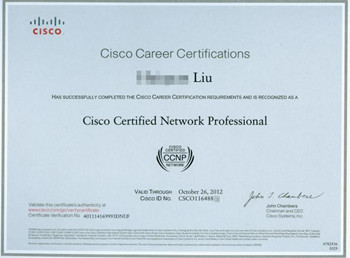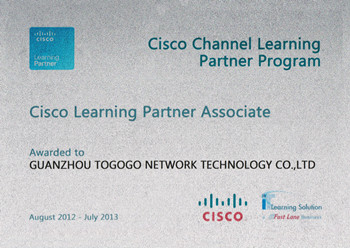


| 课程模块 | 课程周期 | 课程章节 | 课程内容 |
| 第一阶段:CVoice | |||
| CVoice 8 |
第一天
|
Describe adial plan Describe the basic operation and components involved in a VoIP call |
1.Describe a numbering plan 2.Describe digit manipulation 3.Describe path selection 4.Describe calling privileges 5.Describe VoIP call flows 6.Describe RTP、RTCP、cRTP and sRTP 7.Describe H.223 8.Describe MGCP 9.Describe skinny Call Control Protocol 10.Describe SIP 11.Indentify the appropriate gateway signaling protocol for a given scenario 12.Choose the appropriate codec for a given scenario 13.Describe and Configure VLANs |
| 第二天 |
Implement Cisco Unified Communications Manager Express to support endpoints using CLI |
1.Describe the appropriate software components needed to support endpoints 2.Configure DHCP、NTP and TFTP 3.Describe the differences between the 4.different types of ephones and ephone-dns 5.Configure Cisco Unified Communications Manager Express endpoints |
|
| 第三天 |
Describe the components of a gateway Implements a gateway |
1.Describe DSP functionality 2.Describe the different types of voice ports and their usage 3.Describe dial peers and the gateway call routing process 4.Describe codecs and codec complexity |
|
| 第四天 | Implement Cisco Unified Border Element |
1.Describe the Cisco Unified Border Element features and functionality 2.Configure Cisco Unified Border Element to provide address hiding 3.Configure Cisco Unified Border Element to provide protocol and media interworking 4.Configure Cisco Unified Border Element to provide call admission control 5.Verify Cisco Unified Border Element configuration and operation |
|
| 第五天 |
Describe the need to implement QoS for voice and video Describe and configure the DiffServ QoS model |
1.Describe causes of voice and video quality issues 2.Describe how to resolve voice and video quality issues 3.Describe QoS requirements for voice and video traffic 4.Describe the diffServ QoSmodel 5.Describe marking based on CoS、DSCP and IP Precedence 6.Configure layer 2 to layer 3 QoS mapping 7.Describe trust boundaries 8.Configure trust boundary on Cisco switches 9.Describe the operations of the QoS classifications and marking mechanisms 10.Describe Low Latency Queuing 11.Describe the operations of the QoS WAN Link Efficiency mechanisms 12.Enable QoS mechanisms on switches using AutoQoS 13.Configure Low Latency Queuing |
|
| 第二阶段:CIPT1和CIPT2 | |||
|
CIPT1 |
第六天 |
Perform initial set up of a Cisco Unified Communicatios Manager Cluster |
1.Describe Cisco Unified Communications Manager Cluster architecture 2.Describe Cisco Unified Communications Manager redundancy designs 3.Describe the requirements for Cisco Unified Communications Manager use of DHCP、TFTP、DNS and NTP 4.Determine the services necessary to support a Cisco Unified Communications Manager deployment and activate the appropriate Services |
| 第七天 |
Describe and configure Cisco Unified Communications Manager to support on-cluster calling Describe and configure a route plan for Cisco Unified Communications Manager to support off-net calling |
1.Configure a Cisco Unified communications Manager group 2.Configure Cisco Unified Communications Manager profiles and device pools 3.Configure Cisco Unified Communications Manager templates 4.Manage phones and users using Cisco Unified Communications Manager bulk Administration Tool 5.Describe the tool for Auto-Registered Phones Support functionality 6.Describe Cisco Unified Communications Manager digit analysis 7.Implement gateways 8.Configure route patterns 9.Configure route lists and route groups 10.Implement toll-fraud prevention 11.Configure digit manipulation 12.Describe the functions and usage of calling search spaces and partitions 13.Implement calling privileges 14.Describe Cisco Unified Communications Manager digit analysis 15.Implement gateways 16.Configure route patterns 17.Configure route lists and route groups 18.Implement toll-fraud prevention 19.Configure digit manipulation 20.Describe the functions and usage of calling search spaces and partitions 21.Implement calling privileges |
|
| 第八天 | Describe and configure Cisco Unified Communications Manager media resources |
1.Describe media resources 2.Configure MeetMe conferencing and software conferencing resources 3.Configure Music on Hold 4.Configure Media Resource Groups and Media Resource Group Lists |
|
| 第九天 | Describe and configure the Cisco Unified Communications Manager to support features and applications |
1.Configure IP phone services 2.Configure Cisco Unified Communications Manager native presence features 3.Configure Cisco Unified Mobility |
|
| 第十天 | Describe and implement centralized call processing redundancy |
1.Describe device fail over 2.Configure call survivability 3.Configure Cisco Unified Survivable Remote Site Telephony operation 4.Configure Cisco Unified Communications Manager Express to provide redundancy 5.Configure MGCP Fallback operation 6.Verify redundancy operations |
|
| 第十天 | Describe and configure a multi-site dial plan for Cisco Unified Communication Manager |
1.Describe the issues with multi-site dial plans 2.Describe the differences between the various gateways and trunk types supported by Cisco Unified Communication Manager 3.Implement trunks 4.Describe globalized call routing 5.Implement a numbering plan for multi-site topologies 6.Configure tailend hop off |
|
| 第十一天 | Implement call control discovery and Cisco Inter Company Media Exchange |
1.Configure Service Advertisement Framework Forwarder 2.Configure Service Advertisement Framework Client Control 3.Configure Service Advertisement Framework call Control Discovery |
|
| 第十二天 | Implement bandwidth management and Call Admission Control |
1.Configure regions 2.Implement transcoders and MTPs 3.Configure locations 4.Implement RSVP agents 5.Implement SIP precondition 6.Describe functionality of a gatekeeper 7.Implement gatekeeper-based call Admission Control 8.Configure Automated Alternate Routing 9.Configure multi-site Music on Hold |
|
|
1.Configure Cisco Unified Communications Manager Device Mobility 2.Configure Cisco Extension Mobility |
|||
| 第三阶段:CAPPS | |||
| CAPPS | 第十三天 | Configure Cisco Unity Connection |
1.Choose the appropriate desktop messaging interface for client machines 2.integrate Cisco Unity Connection and Cisco Unified Communications Manager 3.Configure Cisco Unity Connection system settings 4.Describe call management options 5.Configure call routing options 6.Configure audiotext applications 7.Configure Cisco Unity Connection partitions and search spaces 8.Configure account policies,subscriber classes of services,and subscriber templates |
|
1.Choose the appropriate desktop messaging interface for endpoints 2.Integrate Cisco Unity Express and Cisco Unified Communications Manager Express 3.Configure Cisco Unity Express system settings 4.Configure call routing options 5.Configure auto-attendant 6.Configure accout policies,subscriber classes of service,and subscriber templates 7.Import user accounts into Cisco Unity Express from Cisco Unified Communications Manager Express 8.Troubleshoot Cisco Unity Express |
|||
| 第十四天 | Implement Cisco Unified Presence solution |
1.Describe the function and operation of cisco Unified Presence 2.Describe Cisco Unified Presence solution components 3.Describe the Cisco Unified Presence solution communication flows 4.Configure Cisco Unified communications Manager for integration with Cisco Unified Presence 5.Integrate Cisco Unified Presence with Cisco Unified Communications Manager 6.Integrate Cisco Unified Presence with Cisco Unified Communications applications 7.Troubleshoot Cisco Unified Presence |
|

 十九年老品牌
十九年老品牌
相关课程推荐
CCIE-EI CCNP-EI企业基础架构 思科认证网络高级工程师 CCNA-EI企业基础架构 思科认证网络助理工程师 CCIE-EI企业基础架构 思科认证网络专家 CCNA-Security 安全认证 CCNP-Security 安全认证 CCIE-Security 安全认证 CCNA-Service Provider 运营商认证 CCNP-Service Provider 运营商认证 CCIE-Service Provider 运营商认证 CCNA-Collaboration 协作认证 CCNP-Collaboration 协作认证 CCIE-Collaboration 协作认证 CCNA-Data Center 数据中心认证 CCNP-Data Center 数据中心认证 CCIE-Data Center 数据中心认证 CCNA-Enterprise CCNP-Enterprise CCIE-Wireless 无线认证 CCNA-Cloud 云认证 CCNP-Cloud 云认证